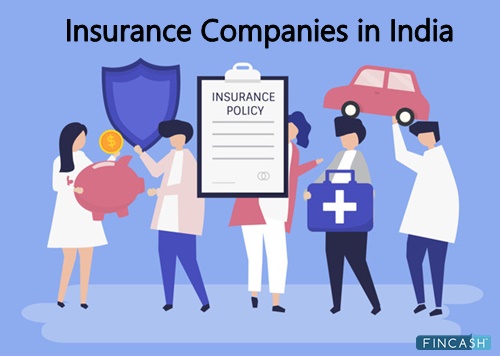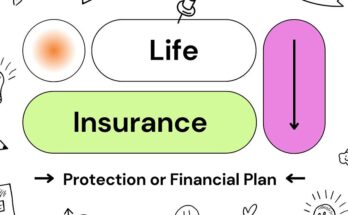
When it comes to securing your family’s financial future, life insurance is one of the most crucial steps you can take. Whether you’re considering a policy for the first time or reviewing your existing coverage, understanding the key features of life insurance is essential to choosing the right plan for your needs. In this article, we’ll break down the most important things to look for in a life insurance policy and explain the essential features that will help guide your decision-making process.
1. Type of Life Insurance Coverage
The first step in selecting a life insurance policy is determining the type of coverage that best fits your needs. There are two primary categories:
- Term Life Insurance: Provides coverage for a specified period (e.g., 10, 20, or 30 years). It’s typically more affordable than whole life insurance, making it a popular choice for people looking for temporary coverage to protect their family in case of an untimely death.
- Permanent Life Insurance: This includes policies like Whole Life, Universal Life, and Variable Life Insurance, which provide lifelong coverage and often build cash value over time. Permanent policies tend to be more expensive but offer additional benefits, such as accumulating a cash value that can be borrowed against or used for retirement.
When choosing between term and permanent life insurance, consider your financial goals, how long you need coverage, and your budget.
2. Coverage Amount
The coverage amount, also known as the death benefit, is the sum your beneficiaries will receive upon your passing. It’s crucial to select a coverage amount that will adequately replace your income, cover any outstanding debts, and ensure your loved ones can maintain their lifestyle.
A general rule of thumb is to have coverage equal to 10 to 15 times your annual income. However, you should also factor in other financial obligations, such as:
- Mortgage or rent payments
- Childcare or educational expenses
- Funeral costs
- Outstanding loans (e.g., student loans, personal loans)
Some insurers offer online calculators to help you determine the appropriate coverage based on your circumstances.

3. Premiums
Your premium is the amount you pay for your life insurance policy, usually on a monthly or annual basis. Premiums can vary depending on several factors, including the type of policy, the coverage amount, and your health and age.
It’s essential to choose a premium that fits within your budget. Keep in mind that for term life insurance, premiums tend to stay the same for the duration of the policy. In contrast, premiums for permanent life insurance may increase as you age, especially for Universal Life policies, where the cost of insurance can rise over time.
4. Policy Riders
Life insurance riders are additional provisions or options that you can add to your policy for extra protection. Some common riders include:
- Accelerated Death Benefit Rider: Allows you to access a portion of the death benefit if you are diagnosed with a terminal illness.
- Waiver of Premium Rider: Waives your premium payments if you become disabled and unable to work.
- Accidental Death Benefit Rider: Pays an additional benefit if you die due to an accident, providing extra coverage in specific situations.
Adding riders can increase the cost of your policy, but they offer valuable flexibility and added security. Be sure to carefully evaluate which riders make the most sense for your personal situation.
5. Exclusions and Limitations
It’s crucial to understand the exclusions and limitations of your life insurance policy. These refer to situations where your beneficiaries might not receive the death benefit. Common exclusions include:
- Death caused by suicide (usually within the first two years of the policy)
- Death resulting from high-risk activities, such as skydiving or scuba diving (unless specifically covered)
- Death due to drug or alcohol abuse
Before committing to a policy, thoroughly read the terms and conditions to ensure you’re aware of any exclusions or limitations that might apply.

6. Cash Value and Investment Options (For Permanent Life Insurance)
If you’re considering a permanent life insurance policy (e.g., whole life or universal life), one of the key benefits is the ability to build cash value over time. This cash value grows at a tax-deferred rate, and you can access it in the future through withdrawals or loans.
For Universal Life Insurance and Variable Life Insurance, you may also have the option to allocate the cash value to various investment options, such as stocks and bonds, which can lead to higher returns (though they come with greater risk).
If you value the potential to accumulate savings while having life insurance, consider how the policy’s cash value works and whether it aligns with your long-term financial goals.
7. Insurer’s Reputation and Financial Strength
Choosing a reliable insurance company is just as important as selecting the right policy. Research the financial stability and customer service reputation of the insurer you’re considering. Look for companies with high ratings from independent agencies, such as:
- A.M. Best
- Moody’s
- Standard & Poor’s
A financially strong insurer ensures that they’ll be able to pay out claims when the time comes, and good customer service means you’ll have a smoother experience if you ever need to adjust your policy or file a claim.

8. Flexibility and Renewability
If you’re opting for a term life insurance policy, you’ll want to understand the renewal process at the end of the term. Some policies allow you to renew your coverage without providing proof of good health, while others might require a medical exam or significantly increase your premiums.
For permanent policies, flexibility can be key. Policies like Universal Life offer the ability to adjust your premiums and death benefit amount, depending on your changing needs over time.
9. Policy’s Surrender Value (For Permanent Life Insurance)
If you ever decide to cancel your permanent life insurance policy, you may be entitled to a surrender value—the amount the insurer pays you after deducting any applicable fees or outstanding loans. This is more common in Whole Life and Universal Life policies, which build cash value over time.
Make sure you understand the policy’s surrender value and any penalties or fees associated with canceling it before purchasing.
Final Thoughts
Choosing the right life insurance policy is a significant decision that can provide peace of mind for you and your loved ones. When shopping for life insurance, focus on the key features that align with your needs and financial goals—whether that’s an affordable term policy, a permanent policy with cash value accumulation, or a rider that provides additional protection.
Take the time to research different options, compare quotes from various insurers, and consult with a licensed agent or financial advisor to ensure you’re making an informed choice. By understanding the essential features of life insurance, you can select a policy that offers comprehensive protection and financial security for the future.

FAQs:
1. How much life insurance coverage do I need?
Generally, aim for coverage that is 10 to 15 times your annual income, factoring in debts, living expenses, and future needs.
2. Can I change my life insurance policy later?
Yes, many policies allow you to make adjustments, especially permanent life insurance policies, which offer flexibility in premiums and coverage amounts.
3. Is life insurance tax-free?
In most cases, the death benefit from life insurance is tax-free for your beneficiaries. However, any cash value growth or withdrawals may be subject to taxes.



